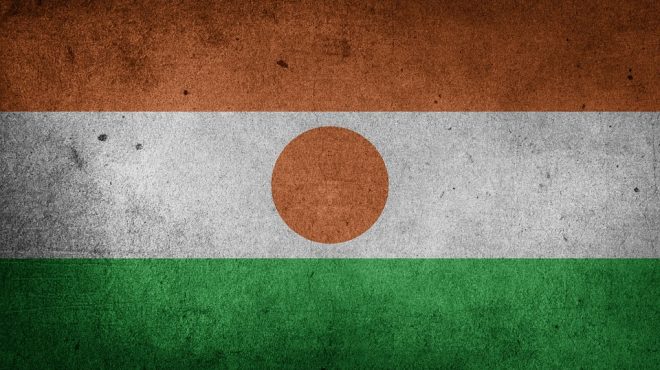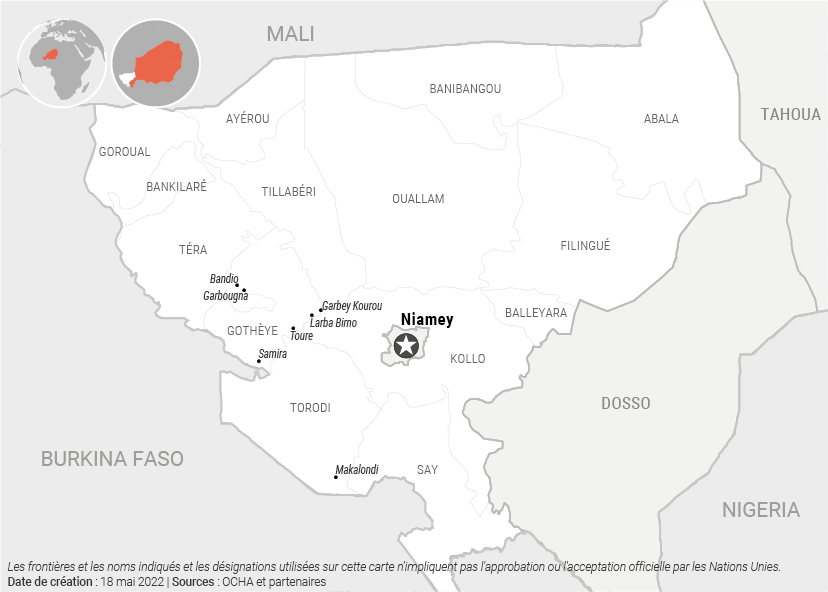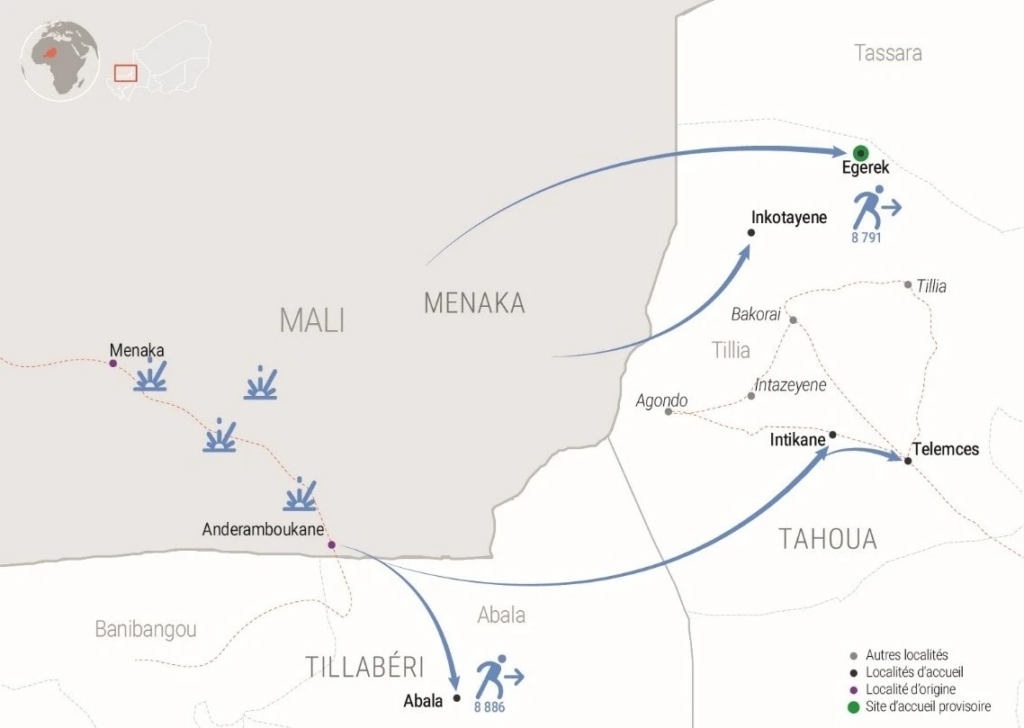On Monday, January 3, 2022, a skirmish occurred in the morning between a Niger National Guard reconnaissance mission and an ISGS group in Sanam in Tillabéri. According to authorities, since the start of the first terrorist attacks in 2015, Burkina Faso has recorded more than 2,000 civilians and military personnel killed and more than 1.8 million others who have left their home communities to flee to neighboring countries including Niger.
Niger needs peace and security to lay the foundations for its economic and social development. It must therefore provide an adequate and relentless response to terrorist organizations.

Situated at the heart of conflicting interests and the struggle for power between legitimate states and terrorists, Niger is also confronted with the will of fundamentalists fighting to impose Sharia law from the Gulf of Guinea to Sudan. Like its neighbors, Niger’s rich soil, porous borders, and lack of government control of its space make it a target of greed for both traffickers and terrorists.
The Sahara is an immense space in which the state, although present, is unable to control the many areas that are conducive to the establishment of various armed groups. Since the 2000s, organizations claiming to be armed jihadists have been developing. They maintain complex links with local populations, rebel movements and criminal gangs. The drug convoy is adapting and moving to the east of Niger. Control of the convoys is the subject of major disputes between the various terrorist groups. The first armed incidents were reported in 2003 during clashes between the Nigerien Armed Forces (FAN), reinforced by U.S. special forces, and elements of the Salafist Group for Preaching and Combat (GSPC). In 2007, it changed its name to AQIM. The organization does not operate directly on Nigerien soil but subcontracts kidnappings to local criminal groups who deliver the hostages to northern Mali while the terrorist organization consolidates its presence in this new territory. In northern Niger, it does not yet have a rear base but rather operates through small local relays and arms caches.
From 2010 onwards, a change in strategy took place: attacks directly targeted the army or Western interests in Niger, with a strong concentration on mining installations.
Despite a reduced presence, AQIM’s actions have a significant impact. While in the first half of the 2000s, the country did not immediately appear to be one of the most threatened in the Sahelian zone, Niger is now presented, along with Mali, as one of the strategic areas of confrontation between jihadist groups and Western countries.
Because of its geopolitical and geostrategic location, Niger is not immune to the activities of armed jihadist groups that destabilize neighboring countries. In the north, on the border with southern Libya, there is a high concentration of arms and drug trafficking and human trafficking involving AQIM jihadists. In the southeast, on the border with Nigeria, Boko Haram conducts both attacks and local recruitment operations, particularly in the Diffa region. On the western border with Mali and Burkina, the JNIM coalition (AQIM, Ansardine, Al Mourabitoune and MUJAO), and the ISGS conduct attacks from Malian territory where they have established themselves.

The security situation in Tillabéri, a region in western Niger bordering Mali and Burkina Faso, is serious. According to the latest report from Ocha, the United Nations Office for the Coordination of Humanitarian Affairs, there have been 135 violent incidents since the beginning of the year, compared to 93 for the whole of 2021. “These attacks come in particular from Burkina through incursions along the Niger River. Since the beginning of the year, there have been movements of internal populations who leave their villages because they have been threatened. This concerns more than 58,000 people,” explained Emmanuel Gignac, the representative of the UN High Commissioner for Refugees in Niamey. This increase in insecurity is causing a serious humanitarian crisis. According to Ocha, the situation is closely linked to the various Islamist groups fighting over territory in the sub-region and the departure of French forces from Mali. The movement of refugees into Niger, following fighting between terrorist and Tuareg groups, is exacerbating this phenomenon. Finally, joint operations between the Nigerien and Burkinabe armed forces are provoking retaliatory attacks.
In the same region, in Diffa, terrorist elements belonging to Boko Haram attacked the customs office in Mainé Soroa, killing one customs officer, wounding three others, and taking a vehicle. Once the act was committed, they fled to Nigeria. Since July 2017, the Diffa region has been under threat from Boko Haram. Its bloody incursions are mainly directed against villages and camps located in the commune of N’Guigmi. All its attacks in the Diffa region take place at night. They demonstrate the terrorists’ desire to conceal themselves and to use the element of surprise to avoid a direct, frontal confrontation with elements of the defense and security forces. In addition, in the event of a pursuit, the nearby desert gives them a certain advantage by offering them a space for mobility. Finally, all of Boko Haram’s targets in the Diffa region are villages and herders’ camps, where the terrorist organization uses intimidation to hide its spoils of war. Slitting the throats of certain members of the population is their best deterrent to ensure the silence of the villagers.

The modes of action of terrorist groups are changing. Less direct confrontation with the armed forces, they are focusing more on acts of sabotage against public and private infrastructure, intimidation of the civilian population living in rural areas, installation of improvised explosive devices (IEDs) on roads, theft of livestock, and targeted kidnappings and assassinations of people.
A checkpoint at Assamaka in the Arlit district on the Algerian border was attacked and destroyed by unidentified assailants.
The geographic location of the Agadez region is either an advantage or a disadvantage, depending on the situation. The vastness of the territory makes it difficult for armed groups to control the region. However, it shares a border with rebel and terrorist-controlled northern Mali. Agadez is also in contact with the borders of Algeria and especially Libya, where militias and armed groups are based. Finally, bordering the desert, it is close to a refuge area that offers a significant strategic advantage in terms of mobility, allowing attackers to disengage from government armed forces in an area they have controlled for generations.
The tri-border area in Niger represents the weak link in the war on terror in Africa. Pooling the resources of Niger’s defense and security forces with those of allied forces, reinforced by their experience and knowledge of the terrain, could counter this threat. For the moment, it forces them to change their mode of action but fails to dissuade them from pursuing their objective.
